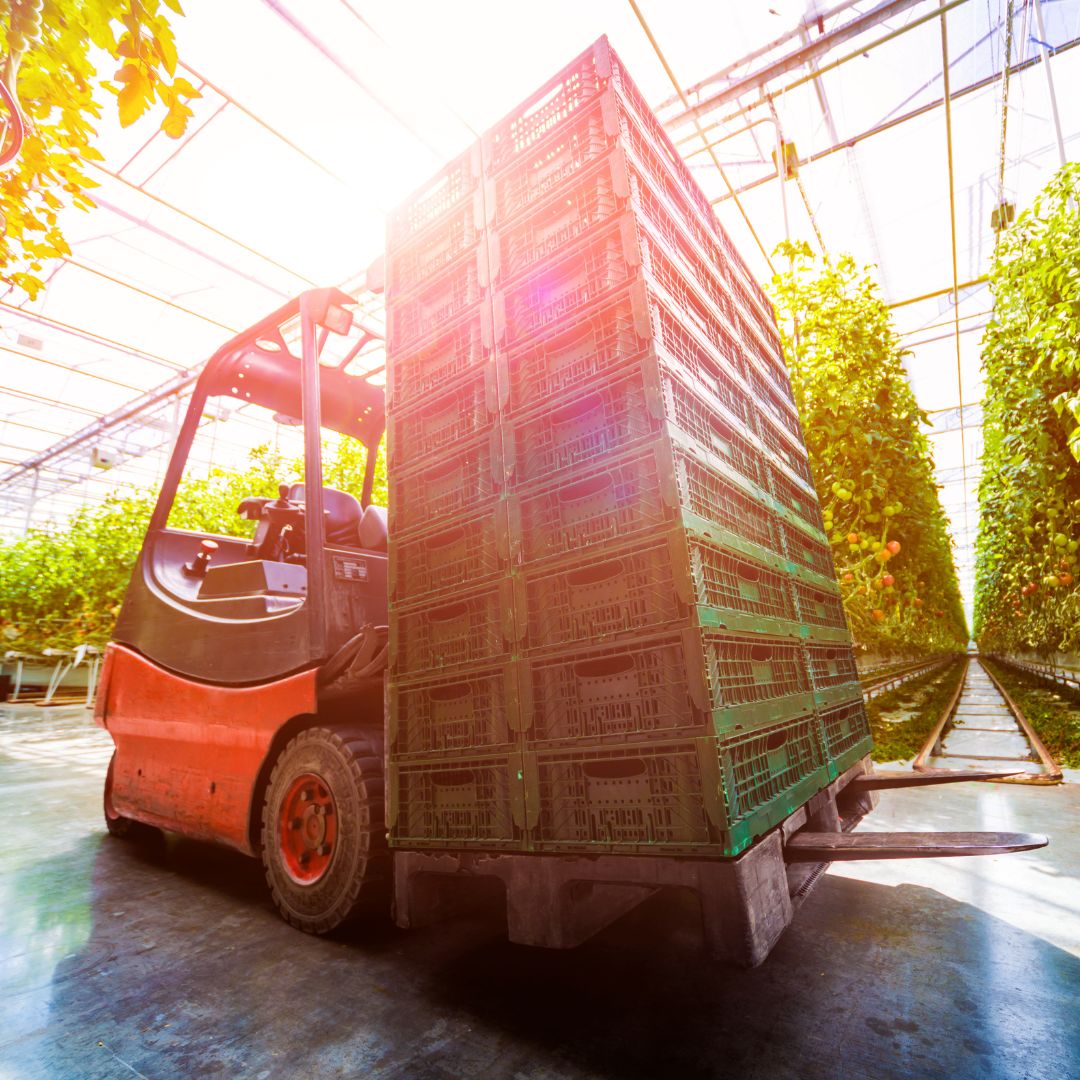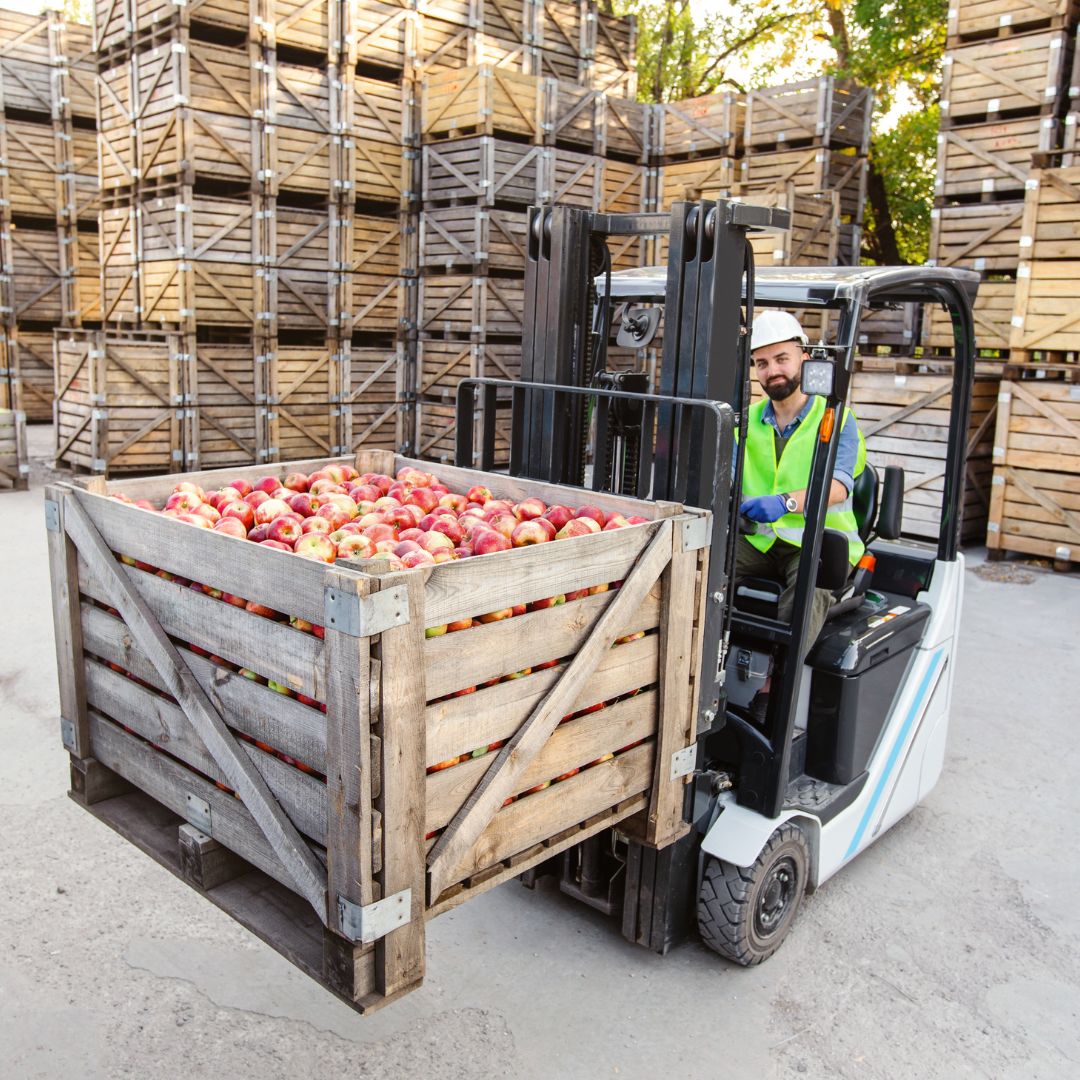Benefits of Material Handling Equipment in Agriculture
11th Sep 2023
Material handling equipment, which was once only used in warehouses and factories, is now being used on farms to improve efficiency and productivity. From planting to product processing, heavy duty precision material handling equipment and supplies are proving to be the essential tools of modern agriculture.
 Material handling supplies are things that help move and store materials. They come in many different types, like storage systems, tools, and equipment. The material handling and agriculture industries are like insects on a forest floor, they come together in a symbiotic relationship that benefits all parties involved.
Material handling supplies are things that help move and store materials. They come in many different types, like storage systems, tools, and equipment. The material handling and agriculture industries are like insects on a forest floor, they come together in a symbiotic relationship that benefits all parties involved.
In this article, we identify four essential reasons why custom material handling systems play a vital role in improving efficiency, increasing productivity, prioritizing safety, and highlighting quality assurance in the vital world of farming and food production.
Four Key Benefits of Material Handling Equipment in the Ag Industry
1. Improved Efficiency for Harvesting and Processing
Material handling equipment like conveyor belts, sorting systems, and automated machinery enable farmers to swiftly gather, sort, and process crops. In addition, Industry Outlook Machinery & Equipment points out that 'material handling supplies such as conveyor systems, forklifts, and pallet jacks can streamline operations and the movement of agricultural products which can increase efficiency, reduce labor costs, and ensure that ag products are reaching the market fresher and faster.'
2. Increased Productivity Contributes to Labor Savings
Mechanized material handling equipment can significantly reduce the time and labor required to transport heavy or bulky materials. This results in employees who can better focus on more skilled tasks, thus enhancing overall productivity. In agriculture, time is money. The right material handling supplies for your operation can cut down hours of heavy labor into mere minutes. With these types of industrial tools by your side, your workforce becomes a LEAN, time-saving machine.
3. Highlight on Employee Safety
In agricultural operations, safety isn't an option - it's a necessity. Material handling equipment, such as safety barriers, lifting devices, and ergonomic tools can create a safer working environment for employees and add to the reduction of workplace accidents and injuries.
4. Spotlight on Quality Assurance
Material handling equipment isn't just about moving stuff, it's about moving valuable assets efficiently, with as little product loss as possible. As Food Safety Magazine advises, 'conscientious handling can minimize waste and help to preserve bountiful harvests.'
Types of Material Handling Equipment for Agriculture
Forklifts
Forklifts are used to lift and move heavy objects, such as bales of hay, grain bins, and livestock feed. They can be used to load and unload trucks with agricultural products, such as fruits, vegetables, and grains. Forklifts can be used to maintain agricultural equipment, such as tractors and combines. This can help to keep the equipment in good working condition and reduce the risk of wasteful downtime.
Pallet Jacks
Pallet jacks are a lightweight and maneuverable alternative to forklifts that can be used to move pallets of materials, such as fruits, vegetables, or livestock feed. They are often used to move materials around the farm, such as from fields to storage facilities, which can help to improve efficiency and productivity. Pallet jacks can also be used to harvest crops, such as fruits and vegetables, which can help to reduce the amount of manual labor required.
Conveyors
Conveyors are used to move materials over long distances, sort and grade them, load and unload trucks, harvest crops, and feed livestock. These customized conveyor systems can help to improve efficiency, reduce the risk of injuries, and reduce the amount of manual labor required of farm operations. This can help to reduce the amount of manual labor required and improve efficiency.
Bins and Carts
Bins are used to store materials, such as grain or seeds. They can also be used to measure and dispense materials. Examples of specific uses for agriculture bins include storing grain in silos, storing seeds in granaries, and measuring and dispensing grain during the feeding process. Carts are used to transport materials, such as fruits, vegetables, or livestock feed, around the farm. They can also be used to harvest crops, such as fruits and vegetables. Examples of specific uses for agriculture carts include moving fruits and vegetables from fields to packinghouses, moving grain from combines to trucks, and moving livestock feed from storage bins to feeding troughs.
Conclusion
It’s not hard to highlight several ways that agricultural operations can benefit from incorporating the proper material handling supply systems into their ag operations. As Morrison School of Agribusiness points out, 'as the need for increased speed and efficiency in ag has grown, material handling systems have replaced tractors on many types of farms.' 
The material handling supply industry encompasses a wide range of tools, equipment, and systems designed to efficiently move, store, and manage materials within a facility or operation, farm or otherwise. In the context of the agriculture industry, the right material handling supplies and equipment can offer valuable advantages for agricultural operations, including reduced product loss, increased efficiency, better inventory management, improved product and employee safety, and enhanced quality control.
BROWSE OUR INVENTORY OF PALLET JACKS
BROWSE OUR INVENTORY OF CONVEYORS


